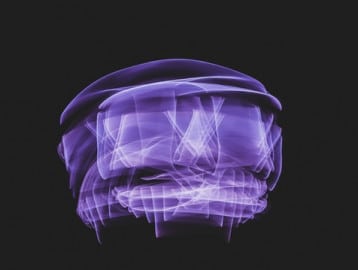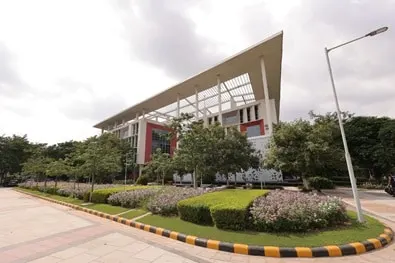Blogs


Engineering Faculty Working on a Fresh “Window” into our Bodies

Dr. Devanjali Relan is working to make looking through the “window” to our heart and brain more affordable.
First in the family to trailblaze into engineering, when she is not juggling teaching engineering and raising her young daughter, Dr. Relan is researching and discovering more about the Retinal Imaging that is increasingly making diagnosing systemic diseases more affordable.
Retinal Imaging provides a relatively inexpensive and non-invasive way to visualize inside the human body.
Researchers are looking into automatic retina image analysis with an increasing interest and importance, not just in ophthalmology anymore but also in other clinical specialties such as cardiology and neurology.
Retinal Imaging is non-invasive in-vivo assessment of the human body’s micro-circulation and hence retina can serve as a “window” to both cardiovascular and neurovascular complications.
Dr. Relan helps break Retinal Imaging down for us.
1) Why are researchers, such as yourself, focusing on Retinal Imaging Processing?
Retina serves as a “window” to the cardiovascular and neurovascular complications as it has been seen that many systemic and neurological diseases manifest themselves in the retina.
Retinal images play an essential role in diagnosing not only the eye diseases but also diseases such as diabetic retinopathy (DR), hypertension, dementia, Alzheimers, etc.
Developments in retinal image processing and automated diagnostic systems open up the possibility for retinal imaging to be used in the large-scale screening programmes to detect early onset of otherwise debilitating conditions, with substantial resource savings and significant impact on healthcare.
2) How can Retinal Imaging make diagnosing diseases more affordable?
There are different imaging modes available, such as magnetic resonance imaging (MRI), computed tomography (CT), positron emission tomography (PET), ultrasound, etc., that play a vital role in identification and diagnosis of various diseases.
But these modalities are quite expensive. In contrast to this, retinal imaging provides a relatively inexpensive and non-invasive way to visualize inside the human body.
Furthermore, machine learning (ML) in retinal-image processing has been proven to be a significant tool for the development of computer aided diagnostic systems.
3) What are the different modalities available for retinal imaging?
There are different modalities such as Fundus camera, Scanning Laser Ophthalmoscopy (SLO) and Optical Coherence Tomography (OCT) using which retinal images can be acquired.
Fundus photography is a commonly used technique for large scale screening to help detect early onset of diseases.
4) What are Biomarkers and especially Biomarker research?
Biomarkers are tell-tale signs or markers of disease which are helpful for the early detection and diagnosis of a disease as well as the management of treatments.
Biomarker research, i.e. investigating associations between the structure of the retinal vasculature (as a means of revealing microvascular health or disease) and particular conditions affecting the body or brain can play an important role in detecting diseases early enough to impact on patient treatment and care.
A fundamental requirement of biomarker research is access to large datasets to achieve sufficient power and significance when ascertaining associations between retinal measures and clinical characterisation of disease.
5) What are different biomarkers for various systemic and neurological diseases extracted from retinal images?
A number of systemic diseases, such as diabetes and cardiovascular disease, and neurodegenerative diseases, such glaucoma and macular degeneration, Parkinson, Dementia, etc., not only affect the retina but are also the leading causes of morbidity and mortality in economically developed nations.
In order to reduce the burden associated with these devastating conditions, there is a need to predict who is at risk or to spot the early stages of disease and target clinical interventions. Thus the identification of discriminatory tell-tale signs or biomarkers is highly prized.
The different biomarkers for instance, Arteriolar-to-Venular diameter Ratio (AVR), marker derived from diameters calculated from arteries and veins measurement, is associated with hypertensive or diabetic retinopathies.
In addition, retinal vessel tortuosity (vessel being curved or tortuous (twisted)) is associated with blood pressure and major cardiovascular disease (CVD) risk factors.
6) How are the clinicians utilizing the multimodal imaging techniques progressively?
Multimodal imaging techniques are progressively used in clinical practice and hence result in the time spent on interpreting images by retinal specialists.
Thus, computer-assisted image assessment automates the image analysis process and may have the potential to improve the efficiency and accuracy as such automated systems are less prone to human factors .
7) What are the biggest challenges in Retinal Imaging?
Artificial Intelligence has a very important role in retinal-image analysis but there are certain limitations where it is important to see if the developed AI model is generalizable to unseen image data or not.
In order to build the generalise model the major challenges arise due to quality, quantity, heterogeneity, unbalance and incomplete data.
8) Why is this not already the preferred approach in hospitals?
Single modality has not been very effective in identifying the biomarkers for cognitive impairment.
Unfortunately, there is no fruitful treatment available once early cognitive damage becomes clinically apparent.
It has been seen that markers extracted from multimodal retinal imaging devices show clear signs of cognitive impairment.
This will allow the early diagnosis and monitoring of disease progression. Though multimodal retinal imaging devices are compact and an ideal clinical aid but unfortunately, they are an expensive mode of scan.
9) It’s been a year since the Pandemic Covid-19 broke. Can Retinal Imaging be used in diagnosis of this flu?
While so far Retinal Imaging has not been used to ascertain the onset of Covid-19 in patients, seeing as this too is a lung disease, it could be possible to understand the changes in imaging and then use this to also diagnose Covid-19 flu.
However, work still needs to be done in this area.
10) The lifestyles of Urban and Rural areas are very different. Are there differences in the Retinal Imaging of the people living in these areas as well?
Retinal Imaging provides the means to see not only signs for the eye diseases but also some systemic and neurodegenerative diseases which leads to retinal manifestations.
There is, however, yet no study that reveals the differences in the retina of the people living in Urban and Rural areas, but some studies do show that diabetic retinopathy is more prevalent in urban areas than in rural areas.
11) What’s the next in Retinal Imaging Processing?
Multi-modal imaging has added significantly to our understanding and management of various diseases.
The main challenge now ahead of us is to reduce the cost of the instruments used, especially for multi-modal image analysis.
These advanced imaging technologies can potentially provide us with more insights into the pathological processes and may help to define newer findings in retinal diseases. Apart from this, we also need to develop user-friendly software.
By - Dr. Devanjali Relan
Trending Blogs
-
6 Most Demanding Engineering Courses in Future (With Salary & Scope)
-
Top 20 High Salary Courses after 12th Science (PCM) 2025
-
Top 14 Career Options After LLB in India 2025
-
12 Fun Management Games For MBA Students
-
16 Prestigious Law Firms in India to Kickstart Your Career
Latest Blogs
-
10 Best Law Colleges in Delhi NCR: Shape Your Legal Career
-
Highest Paying Jobs after BBA in India: Turning Degrees into Paychecks
-
B.Tech. Admission 2025: Your Path to a Promising Future in Engineering
-
The Ultimate MBA Admission 2025 Guide: Turn Ambition into Achievement
-
What Is Liberal Arts Education: More Than Just a Degree
-
Broadening Horizons: Exploring Liberal Arts Subjects
-
BBA LLB Course: Full Form, Admission Process, Fees, Syllabus & More
-
New Education Policy (NEP): Rewriting the Rules of Higher Education
-
Best BBA Colleges in Delhi NCR: Where Future Business Leaders Are Made
-
Top 14 Engineering Branches in India Explained
Related Blogs

New Education Policy (NEP): Rewriting the Rules of Higher Education
The New Education Policy (NEP) marks a groundbreaking step toward revitalising India’s education system to meet the demands of the 21st century. Thi...

How to Calculate SGPA to Percentage: A Step-by-Step Guide
The evaluation of academic performance varies across every education system worldwide. In Indian Universities, particularly in the Credit System, the ...

CUET UG 2025: Registration, Exam Date, Syllabus, Admit Card
As you gear up for the next phase of your academic journey, CUET UG 2025 emerges as an important examination. CUET, which stands for Common Universi...

Top 10 Highest Paying Jobs in India 2025
India’s job market is transfiguring swiftly, transcending all the boundaries of conventional sectors and welcoming space-age industries that promise...

Exploring Law Syllabus: Subjects, Career Options & More
LLB stands for Bachelor of Laws or Bachelor of Legislative Laws. The LLB programme lasts three years and consists of six semesters of coursework. Labo...

B.Com Honours: Full Form, Syllabus, Subjects, Duration, Scope
The four-year undergraduate B. Com (Hons.) programme is intended to give you a span foundation in business and commerce principles. A wide range of di...

